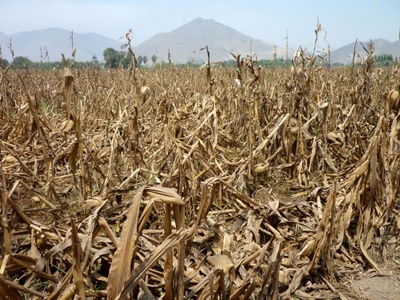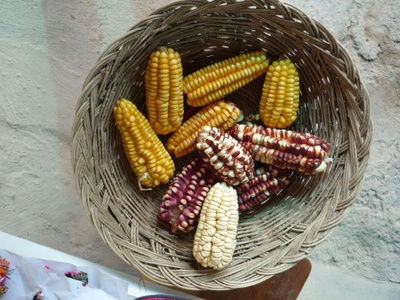Agricultural performance depends on many factors, among which weather is the least controllable by the farmer. Yet rain-fed agriculture is the main source of livelihood in most developing regions. For instance, 95% of the total cultivated land in sub-Saharan Africa is rain-fed. In such regions, in particular weather extremes are key determinants of expected yields: too many dry days or too much precipitation in a few days can severely diminish yields. Similarly for temperature, an optimal range is necessary for proper growth of plants. Heat waves or untimely colds can wreak havoc. Unfortunately, in most developing countries weather information is often scarce and unreliable. Therefore we investigate weaknesses of observational weather data sets that potentially limit the accuracy of crop models.
To most of the weather-related hazards for crops, preventive measures exist, like irrigation, drainage, dam building, early harvesting or later sowing. Such measures operate on various time scales, and to assess their suitability needs information of the near future as well as of long-term changes. To implement short-term measures appropriately, a reliable forecast of weather several weeks or months ahead is paramount. However, this range between weather and climate is known as the ‘predictability desert’ with operational systems – for example by the ECMWF or the NASA – providing only limited skill for regional agricultural applications in Africa.
Novel machine-learning techniques can extract causal relationships from climate data and thus have the potential to give important insights into the underlying physical mechanisms governing teleconnections in the climate system. Well-established teleconnections include the effect of tropical Pacific surface temperatures, known as El Nino Southern Oscillation (ENSO), on temperature and precipitation over tropical land regions. We use causal discovery algorithms to identify these causal teleconnections and to create skilful empirical climate forecasts.
As methods, we apply our suite of crop models (such as AMPLIFY, LPJmL, DSSAT, APSIM, or SWIM) on these weather forecasts to derive crop yield and production forecasts during the season. Such outlooks on the expected harvest can aid farmers, regional planning authorities and insurance providers to design and undertake preventive measures in case of looming losses and to plan supply and demand of commodities accordingly. Our long-term goal is to establish a global, publicly available forecasting system that can supply early warning systems of food security with the required information on agricultural performance.
 |  | ||
|---|---|---|---|
|
Drought inflicted Maize Field in Peru. Source: C. Gornott |
Maize harvest Peru. Source: C. Gornott |





